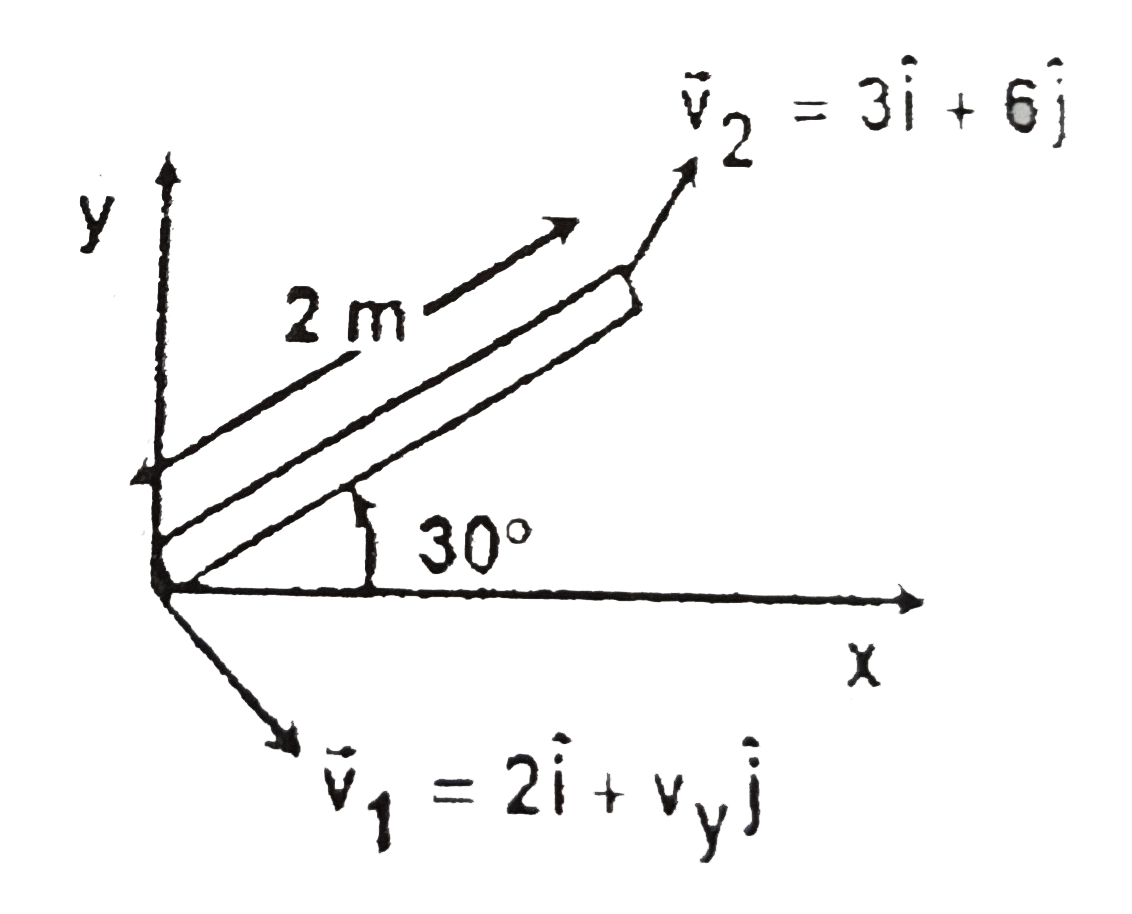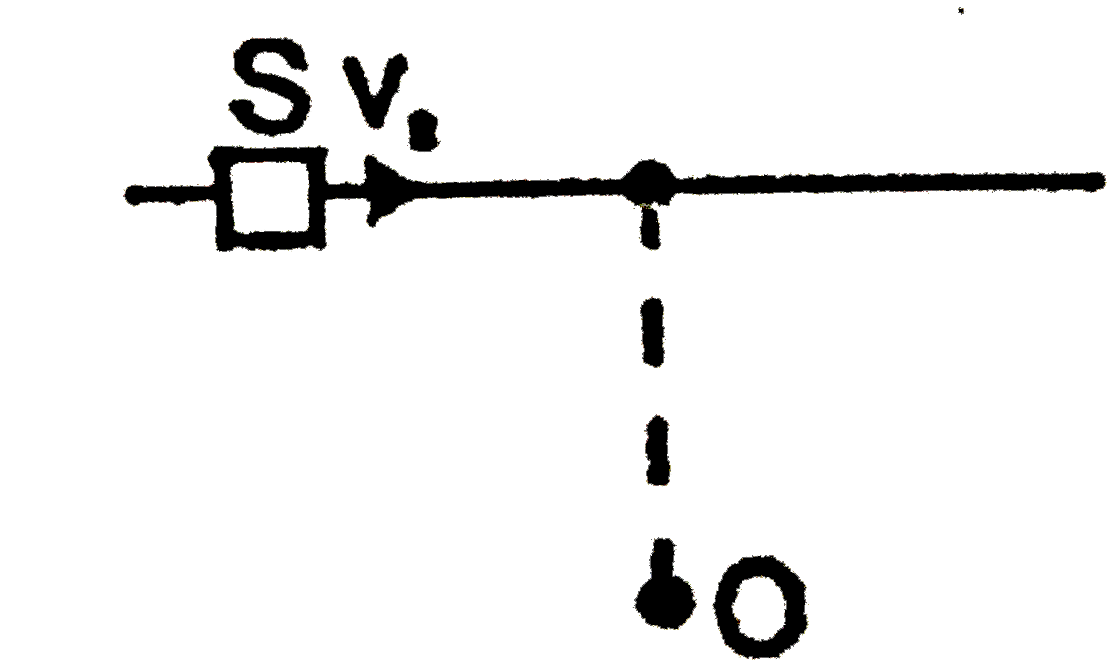Consider a source of sound S, and an observer P. The source emits sound of frequency N0. The frequency observed by P is found to be.
N1=N2=N3
N1<N2
N3<N0
N3 lies between N1 and N2
N1=v0+vv0N0
N2=v0v0−vN0
N3=v0+v2v0−v2N0
Topper's Solved these Questions
- GMP ASSESMENTBOOK - FIITJEECHAPTER - GMP ASSESMENTEXERCISE - Comprehension
58 Videos
- GMP ASSESMENTBOOK - FIITJEECHAPTER - GMP ASSESMENTEXERCISE - Numerical Based
61 Videos
- GMP ASSESMENTBOOK - FIITJEECHAPTER - GMP ASSESMENTEXERCISE - Assertion & Reason
15 Videos
- GENERAL PHYSICSBOOK - FIITJEECHAPTER - GENERAL PHYSICSEXERCISE - MATRIX MATCH TYPE
3 Videos
- GRAVITATIONBOOK - FIITJEECHAPTER - GRAVITATIONEXERCISE - Numerical based Question
2 Videos
Similar Questions
A rod AB of length 2m moves in horizontal x−y plane. At any instant end a of the rod is at origin and has velocity →vA=2ˆi+vyˆj. The other end B at the same instant is moving with velocity →vB=3ˆi+6ˆj. The rod makes an angle of 30∘ with the x−axis at this instant (see figure)
The magnitude of angular velocity of the rod is

View SolutionA cyclist is going in a straight line at a unifrom velocity 18km/h. The resistance force can be expressed as force kv2 where k=0.8 where velocity is in m/s and unit of force is newton. The mass of the cyclist with the bicycle is 100kg. Neglect the rolling resistance force. If the power of the cyclist during the ride is 10x watt, then what is x ?
View SolutionStatement-1 : When an ideal gas is freely expanded change in internal energy of gas is zero, where as when real gas is expanded freely it's internal energy decreases.
Statement-2 : There is no intermolecular force of attraction in ideal gas.
View SolutionTwo resistors along with errors are kown as
R1=(30±3)Ω
R2=(60±3)Ω
column - I lists four alagebratic functions of R1R2 column -II lists corresponding errors where as column -III lisits the absolute errors

pick the correct option
View SolutionA particle is projected radially outwards from the surface of a planet with an initial speed of 4.0km/s. Maximum height attained by the particle is h=900km. Find the radius of the planet taking g=10m/s2.
View SolutionA fixed source of sound emitting a certain frequency appears as f_(a) when the observer is apporoaching the source with upsilon_(0) and f_(r) when the observer recedes from the source with the same speed. The frequency of source is
View SolutionA source of sound is travelling towards a stationary observer. The frequency of sound heard by the observer is 25% more than the actual frequency. If the speed of sound is v, that of the source is
View SolutionThe source (S) of sound is moving constant velocity v_(0) as shown in diagram. An observer O listens to the sound emmited by the source. The observed frequency of the sound
View SolutionThe source producing sound and an observer both are moving along the direction of propagation of sound waves. If the respective velocities of sound, source and an observer are v,vs and v0, then the apparent frequency heard by the observer will be (n = frequency of sound)
View SolutionA source of sound emitting a note of frequency 200 Hz moves towards an observer with a velocity v equal to the velocity of sound. If the observer also moves away from the source with the same velocity v, the apparent frequency heard by the observer is
View SolutionA source of sound of frequency 500 Hz is moving towards an observer with velocity 30 m/s . The speed of sound is 330 m/s . the frequency heard by the observer will be
View SolutionConsider a source of sound S and an observer P. The sound source is of frequency n_(0) . The frequency observed by P is found to be n_(1) if P approaches S at speed v and S is stationary , n_(2) if S approaches P at a speed v and P is stationary and n_(3) if each of P and S has speed v/2 towerds one another. Which of the following conclusion are correct ?
View Solution500 हर्ट्ज की आवृत्ति वाला एक ध्वनि का स्रोत एक प्रेक्षक की तरफ 30 मीटर/सेकण्ड के वेग से जा रहा है। ध्वनि की चाल 330 मीटर/सेकण्ड है। प्रेक्षक द्वारा सुनी हुई आवृत्ति होगी
View SolutionA source of sound is travelling towards a stationary observer. The frequency of sound heard by the observer is 25% more that the actual frequency. If the speed of sound is v, that of the source is
View SolutionA fixed source of sound emitting a certain frequency appears as fa when the observer is apporoaching the source with υ0 and fr when the observer recedes from the source with the same speed. The frequency of source is
View SolutionThe source (S) of sound is moving constant velocity v0 as shown in diagram. An observer O listens to the sound emmited by the source. The observed frequency of the sound

View Solution

